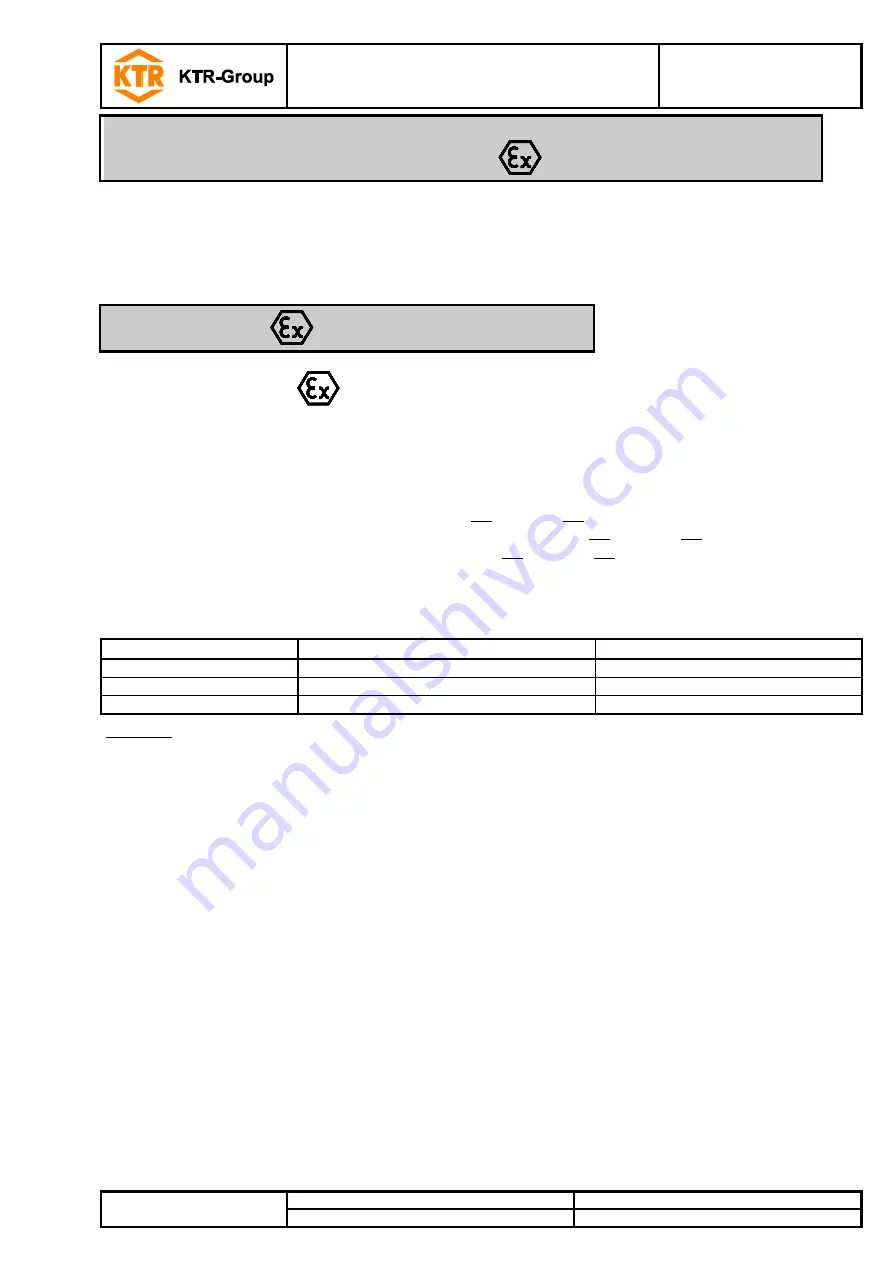
BoWex-ELASTIC
®
Operating/Assembly instructions
Type HEW, HEW Compact and HEW-ZS
KTR-N
Sheet:
Edition:
40114 EN
19 of 24
9
Please observe protection
note ISO 16016.
Drawn:
2019-11-06 Pz
Replacing:
KTR-N dated 2019-08-13
Verified:
2019-11-06 Pz
Replaced by:
9
Enclosure A
Advice and instructions regarding the use in
potentially explosive atmospheres
Types available:
HEW and HEW Compact
Conditions of operation in
potentially explosive atmospheres
BoWex-ELASTIC
®
couplings are suitable for the use according to EU directive 2014/34/EU.
Industry (with the exception of mining)
•
Equipment group II of category 2 and 3 (
coupling is not approved/not suitable for equipment group 1
)
•
Substance group G (
gases, fogs, vapours
), zone 1 and 2 (
coupling is not approved/not suitable for zone 0
)
•
Substance group D (
dusts
), zone 21 and 22 (
coupling is not approved/not suitable for zone 20
)
•
Explosion group IIB (
gases, fogs, vapours
)
(explosion group IIA is included in IIB)
and
explosion group IIIC (
dusts
)
(explosion group IIIA and IIIB are included in IIIC)
Temperature class:
Temperature class
Ambient or operating temperature T
a
1)
Max. surface temperature
2)
T4
-30 °C to +80 °C
+115 °C
T5
-30 °C to +60 °C
+95 °C
T6
-30 °C to +45 °C
+80 °C
Explanation:
The maximum surface temperatures each result from the maximum permissible ambient or operating temperature T
a
plus the maximum
temperature increase
T of 35 K to be considered. For the temperature class a safety margin subject to standard of 5 K is added.
1) The ambient or operating temperature T
a
is limited to +80 °C due to the permissible permanent operating temperature of the
BoWex-ELASTIC
®
elastomer parts used.
2) The maximum surface temperature of +115 °C applies for the use in locations which are potentially subject to dust explosion.
In potentially explosive atmospheres
•
the ignition temperature of dusts generated must at least be 1.5 times the surface temperature to be
considered
•
the glow temperature must at least be the surface temperature to be considered plus a safety distance of 75 K.
•
the gases and vapours generated must amount to the temperature class specified.
9.1 Intended use in
potentially explosive atmospheres




















